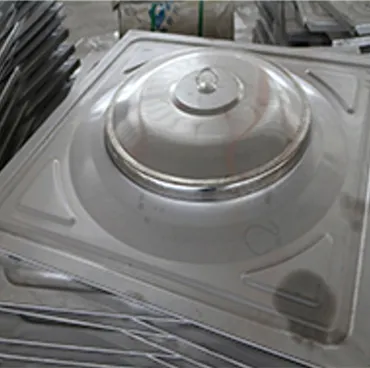loading...
- No. 9, Xingyuan South Street, Dongwaihuan Road, Zaoqiang County, Hengshui, Hebei, China
- admin@zjcomposites.com
- +86 15097380338
- Welcome to visit our website!
frp decking
Understanding FRP Decking A Sustainable Choice for Modern Construction
In the ever-evolving world of construction and architectural design, materials play a crucial role in ensuring durability, sustainability, and aesthetics. One such material that has gained significant attention in recent years is Fiber Reinforced Polymer (FRP) decking. This innovative product offers a multitude of advantages, making it an appealing choice for both residential and commercial construction.
What is FRP Decking?
FRP decking is a composite material made from a polymer matrix reinforced with fibers, typically glass, carbon, or aramid. This combination results in a lightweight, yet incredibly strong and durable material suitable for various applications. In the context of decking, FRP serves as an excellent alternative to conventional materials such as wood, steel, or concrete.
Advantages of FRP Decking
1. Durability and Longevity One of the primary benefits of FRP decking is its outstanding durability. Unlike wood, which can rot, split, or warp, FRP is resistant to moisture, chemicals, and UV damage. This property greatly extends the lifespan of the decking, often lasting decades with minimal maintenance.
2. Lightweight Construction FRP materials are significantly lighter than traditional decking materials, which can lead to reduced structural load and lower construction costs. This lightweight feature also simplifies transportation and installation, making it an attractive option for builders and contractors.
3. Corrosion Resistance In environments subject to harsh weather or chemical exposure, FRP decking excels due to its innate corrosion resistance. It does not rust or degrade when exposed to saltwater, chlorine, or other corrosive substances, making it ideal for marine, industrial, and chemical plant applications.
4. Sustainability As sustainability becomes increasingly important in construction, FRP decking stands out as an eco-friendly choice. Many manufacturers produce FRP from recycled materials, and the longevity of the product means fewer resources are required for repairs or replacements over time. Additionally, FRP's energy-efficient production process contributes to a lower carbon footprint.
frp decking

5. Aesthetic Versatility FRP decking comes in a variety of colors, textures, and finishes, allowing for significant design flexibility. Whether aiming for a modern look or a more traditional ambiance, architects and designers have the creative freedom to achieve their vision without compromising durability.
6. Slip Resistance and Safety Safety is paramount in decking materials, particularly in areas prone to moisture. FRP decking surfaces can be engineered to provide excellent slip resistance, reducing the risk of accidents in wet or icy conditions.
Applications of FRP Decking
The versatility of FRP decking enables its use across a wide range of applications
- Marine Environments FRP is commonly used in docks, piers, and walkways, where exposure to saltwater and extreme weather conditions is frequent. - Industrial Facilities Warehouses, factories, and plants benefit from FRP decking's durability and resistance to chemicals. - Commercial Spaces Shopping centers, restaurants, and hotels often incorporate FRP for its aesthetic appeal and low maintenance needs. - Residential Decking Homeowners are increasingly opting for FRP decking on patios and balconies, appreciating its longevity and minimal upkeep.
Conclusion
As the construction industry continues to prioritize sustainable and resilient materials, FRP decking emerges as a frontrunner in this pursuit. Its exceptional durability, lightweight properties, resistance to environmental factors, and aesthetic versatility make it an intelligent choice for various applications. Whether enhancing a waterfront property, designing a commercial facility, or building a residential deck, FRP decking offers a compelling solution that meets modern demands.
In a market where sustainability and performance are key, embracing innovative materials like FRP is not just an option; it is a necessity for forward-thinking builders and designers looking to make a lasting impact. By choosing FRP decking, stakeholders in the construction industry can contribute to a greener future, ensuring that their projects stand the test of time while minimizing their environmental footprint.
-
The Rise of FRP Profiles: Strong, Lightweight, and Built to LastNewsJul.14,2025
-
SMC Panel Tanks: A Modern Water Storage Solution for All EnvironmentsNewsJul.14,2025
-
GRP Grating: A Modern Solution for Safe and Durable Access SystemsNewsJul.14,2025
-
Galvanized Steel Water Tanks: Durable, Reliable, and Ready for UseNewsJul.14,2025
-
FRP Mini Mesh Grating: The Safer, Smarter Flooring SolutionNewsJul.14,2025
-
Exploring FRP Vessels: Durable Solutions for Modern Fluid HandlingNewsJul.14,2025
-
GRP Structures: The Future of Lightweight, High-Performance EngineeringNewsJun.20,2025
